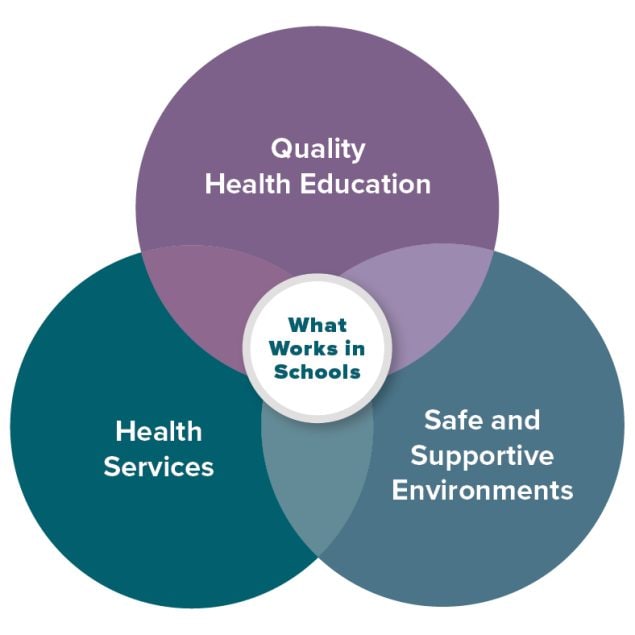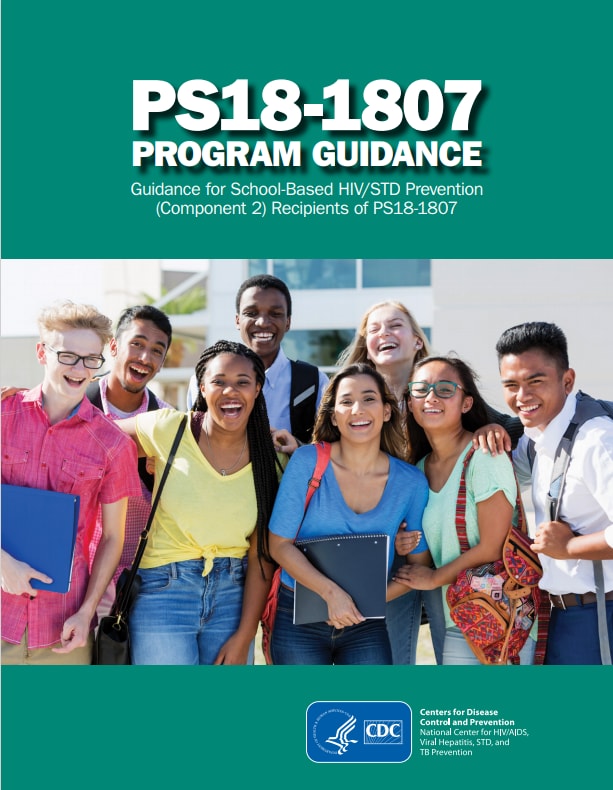Approach to Health Education

CDC encourages school districts and schools to take action to ensure that health education is medically accurate, age and developmentally appropriate, and affirms the diversity of youth and their communities to enhance health knowledge, skills, and behaviors.
As part of a school-based health education program, sexual health education uses learning objectives, lessons, materials, and assessments that help prevent HIV/STD, unintended pregnancy, and related risk behaviors among adolescents.
Health education, including sexual health, should:
Provide health information that is accurate, appropriate, and directly contributes to health-promoting decisions and behaviors
Provide health information that is accurate, appropriate, and directly contributes to health-promoting decisions and behaviors
Ensure all youth are provided with opportunities to build skills needed to protect themselves and others from HIV and other STDs, and unintended pregnancy
Ensure all youth are provided with opportunities to build skills needed to protect themselves and others from HIV and other STDs, and unintended pregnancy
Address the needs of youth who are not having sex as well as youth who are currently sexually active
Address the needs of youth who are not having sex as well as youth who are currently sexually active
Consistently include topics and gender identities that are culturally relevant and affirming for LGBTQ+ and other youth
Consistently include topics and gender identities that are culturally relevant and affirming for LGBTQ+ and other youth
Align with adolescent health data, that are relevant to school policies and practices, and community priorities and values
Align with adolescent health data, that are relevant to school policies and practices, and community priorities and values
Use direct, active involvement from students, parents, and community partners
Use direct, active involvement from students, parents, and community partners

See CDC’s What Works: Sexual Health Education to learn more about effective ways schools can provide youth with the essential knowledge and skills needed to decrease sexual risk behaviors.
CDC Activities & Initiatives
Beyond sexual health education, broader school health programs can help students adopt lifelong attitudes and behaviors that support their health and wellbeing – including behaviors that can reduce their risk for substance use, experiencing violence, and poor mental health.1-3
CDC provides program guidance on how to increase student access to health education by encouraging schools to:
- Establish and implement skills-based health education courses
- Develop a health education scope and sequence to identify student health behavior outcomes, knowledge and skills expectations across a diverse set of topic areas
- Select, develop, or adapt health education lessons, activities, and assessments that are inclusive and affirming for all youth, including LGBTQ+ youth
- Provide training for health education teachers to effectively implement instructional programs
- Consistently engage key school and community members to improve school health education programs
- Involve parents, guardians, and caregivers in health education instructional programs
What’s Working: Success Stories
Learn more about how CDC-funded school districts are expanding implementation of quality sexual health education in middle and high school.
Investing in Health: The Importance of Partnerships
The Whole School, Whole Community, Whole Child (WSCC) Model
- Eisen M, Pallitto C, Bradner C, Bolshun N. Teen Risk-Taking: Promising Prevention Programs and Approaches. Washington, DC: Urban Institute; 2000.
- Lohrmann DK, Wooley SF. Comprehensive School Health Education. In: Marx E, Wooley S, Northrop D, editors. Health Is Academic: A Guide to Coordinated School Health Programs. New York: Teachers College Press; 1998:43–45.
- Nation M, Crusto C, Wandersman A, Kumpfer KL, Seybolt D, Morrissey-Kane, E, Davino K. What works: principles of effective prevention programs. American Psychologist 2003;58(6/7):449–456.
